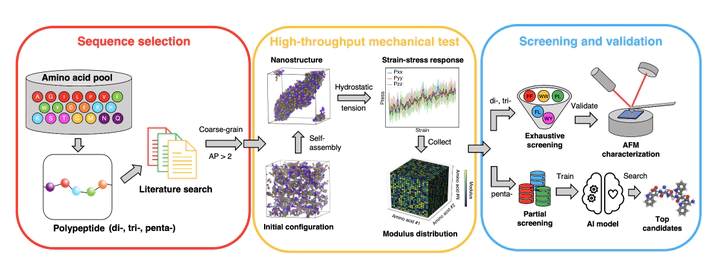Learning mechanical property and phase of polypeptide self-assemblies

Short peptides are known to have varied self-assembly behaviour, forming structures such as spheres, fibers and hydrogels. The functionality of these materials is intrinsically linked to their materials properties, with the Young’s modulus being a key value that guides their applications. A high toughness is essential for applications such as structural support and in electronic devices, whereas softer materials are required for biomedical applications. However, the short peptide sequence space is vast, hence have the ability to predict the assembly and modulus of short peptides is a key tool for finding novel materials. Here, we present a combined approach to predicting the modulus of di- tri- and penta- peptides, and validate this data using nano mechanical mapping experiments. In order to predict modulus values, we first screen all sequences using coarse grained molecular dynamics, then perform hydrostatic testing each of the structures.